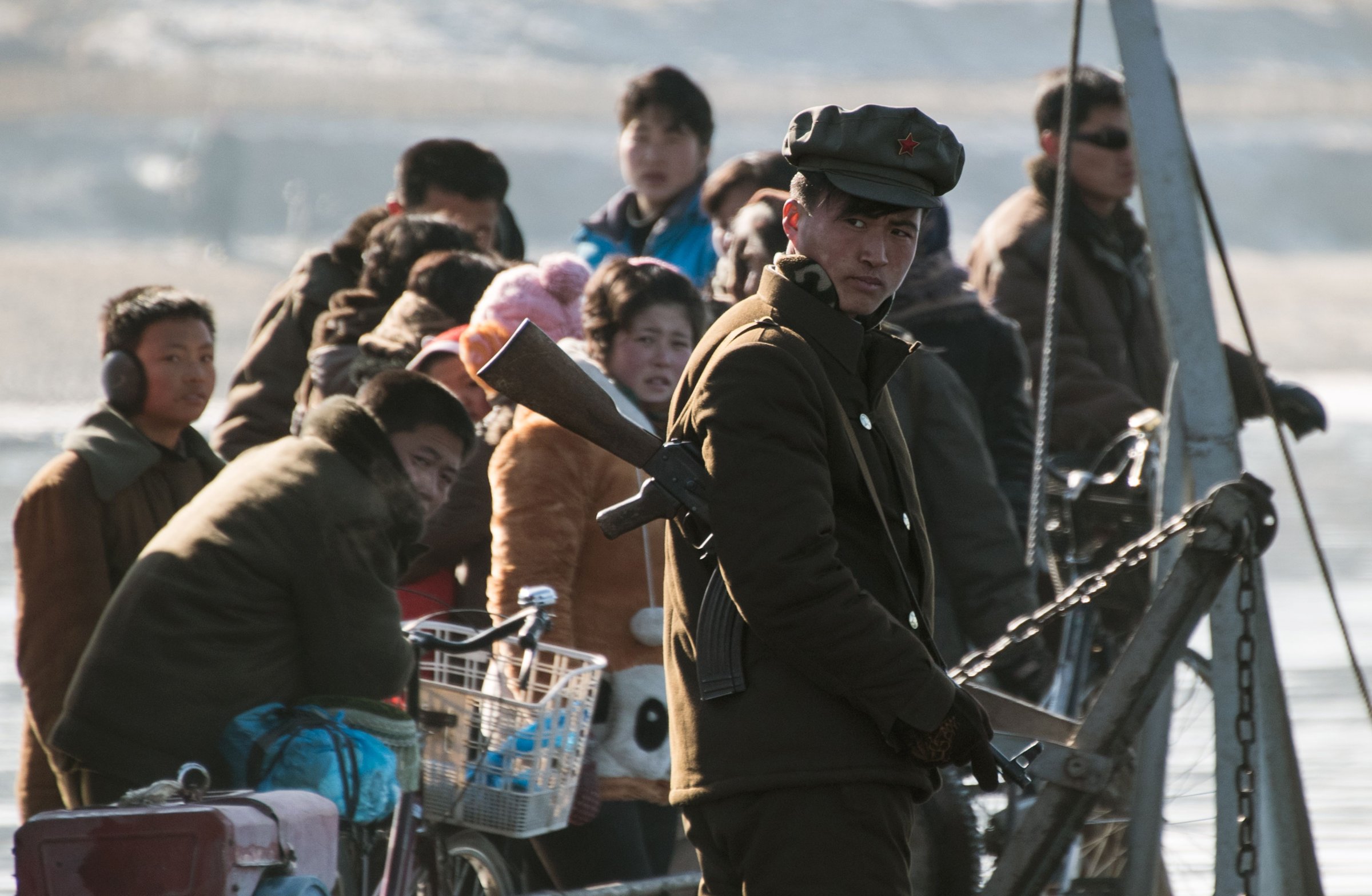
This was awkward. The karaoke-bar proprietor had been rather insistent — forceful even — in her promise that there would be real North Korean staff to sing, pour drinks and chat with guests. This being Dandong, a bustling entrepôt of 2.5 million perched on China’s riverine frontier with the secretive socialist state, it’s not as though there weren’t plenty of North Koreans milling around. You can spot them by their lapel pins honoring the nation’s founding father, Kim Il Sung, and ensembles that looked like they walked off a Cold War film set.
But the plump and obviously Chinese girl fidgeting in the karaoke salon — replete with fake variegated ivy and vibrating miniature dance floor — didn’t quite fit. Sure, “Golden Light,” as she called herself, was decked in a billowing traditional chima jeogori dress, but she answered questions in impeccable Mandarin and struggled with the K-pop songs on the flickering television screen. “She is from North Korea,” the boss insisted.
Dandong is a strange place. Across the Yalu River lies the world’s most repressive regime, yet the city has a waterfront charm, complete with selfie-obsessed tourists and kitschy souvenir shops. The incongruity is hard to ignore. Between two enormous banners advertising the “Yalu River Beer Festival” hangs another in vivid red that warns: “Everyone Should Defend the Nation’s Security: Our Nation’s Interest Is Above All.” The city is one-third military frontline, one-third tourist trap, one-third import-export hub.
Read More: What It’s Like to Be a Western Tourist in North Korea
China is North Korea’s only major trading partner, and roughly 70% of all the goods that pass between these neighbors comes across Dandong’s rickety iron bridge, or on the ships that chug between the riverbanks. But following Pyongyang’s recent barrage of nuclear and missile tests, Beijing signed up to unprecedented U.N. sanctions in March. (Another test took place on Wednesday.) Chinese imports of coal — North Korea’s main cash cow — and exports of building materials and assorted household goods have been slashed. Shopkeepers in Dandong say they can no longer openly display popular contraband like North Korean cigarettes. No matter. Following the September opening of a new high-speed rail route to Beijing, tyranny tourism is booming.
“Every day we send dozens of people across to Sinuiju for one- or four-day trips,“ says local travel agent Li Qiang, referring to North Korea’s third largest city that sits opposite Dandong. “You can’t take a mobile phone and can only take an old film camera. Anyone can go — except Americans, Japanese and South Koreans.”
There are easier ways to get a glimpse of North Korean life, though. Whereas the nation’s border with South Korea is 4-km-wide demilitarized zone — ironically, the most militarized place on earth — just a few kilometers outside Dandong the opposite frontier narrows to barely 20 m of silty water. A tourist path winds its way along the river below the easternmost section of China’s Great Wall, providing unobstructed views of North Korean farmers toiling in fields, soldiers manning watchtowers and bedraggled women trailing behind tractors.
“I’m really curious and wanted to see the mysterious North Korea,” says Luan Shicai, a 42-year-old hairdresser from provincial capital Shenyang, standing by a Chinese government sign that warns visitors against throwing food to the North Koreans. “After seeing their life, it makes me feel good about my life here.”
Those not satisfied with gazing across the Yalu River can get a bit closer. Boat tours weave between North Korean islands that sit in the middle of the waterway. For about an hour, passengers are completely surrounded by North Korean territory. A young North Korean solider squatting on concrete defenses dating from the Japanese occupation begs for money. A couple more in threadbare, muddy-brown uniforms lounge in a rust-bucket boat, and implore our guide to bring them waterproof jackets and umbrellas on his next trip. A fourth herds a gaggle of ducklings down the shore using a twig. On the opposite bank, a regiment of female marines — all wearing white shirts, black pants and straw hats — returning from the cornfields, wipe their brows with yellow squares of cloth.
“More and more foreigners are coming here to see North Korea,” says a boat captain called Mr. Kang, explaining that he makes 10 trips a day in peak season. The boat slows next to a well-dressed girl and Mr. Kang strikes up a conversation. “I know her well,” he says. “She is from a wealthy family, you can tell by her dress. She always smiles. I tease her to get on my boat.”
Read More: Inside the Lives of Two Young North Korean Defectors
Teng Xiang, the company that runs the tour, started the service in 2009 and has three ports with around eight large cruisers and a dozen speedboats at each. Rumors that the firm pays the North Korean government $300,000 annually to ply the route were denied by a staff member contacted by TIME.
A single-engine longboat approaches driven by a man in black flat cap, utility waistcoat and cloth trousers rolled up to his knees. He begins hawking an assortment of wares — eggs, North Korean cigarettes, plastic tubs of cabbage kimchi, “tiger bone” liquor. But he’s not a chancing smuggler — he’s an employee of the North Korean government, running probably the world’s smallest duty-free shop.
“He can collect 2,000-3,000 yuan [$300-500] a day,” says Mr. Kang, as he guns the engine away. “But he gives all that to the government. He only gets paid 50 yuan [$7.50] per month. That’s an extremely good wage in North Korea.”
Inside the Lives of Two Young North Korean Defectors



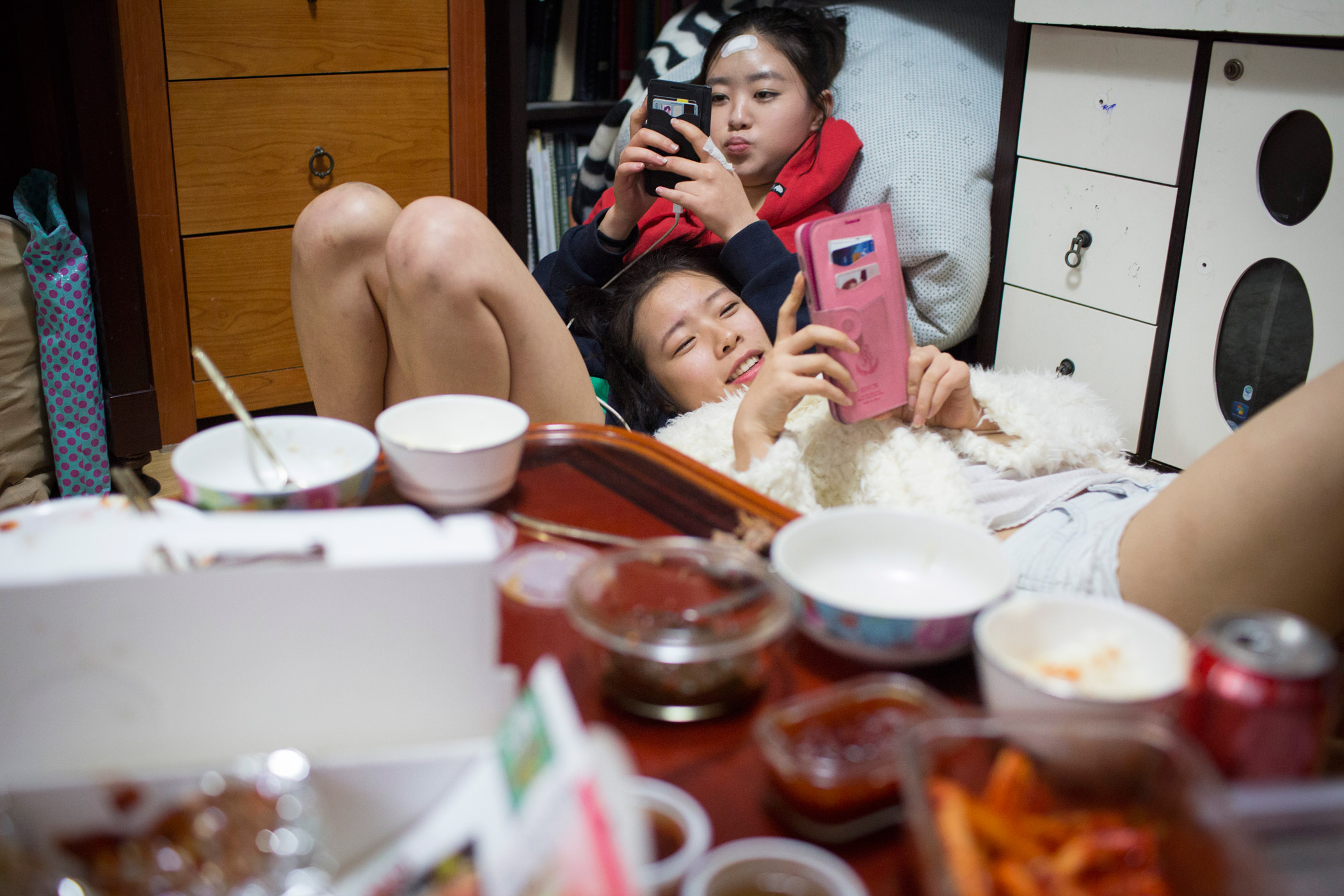

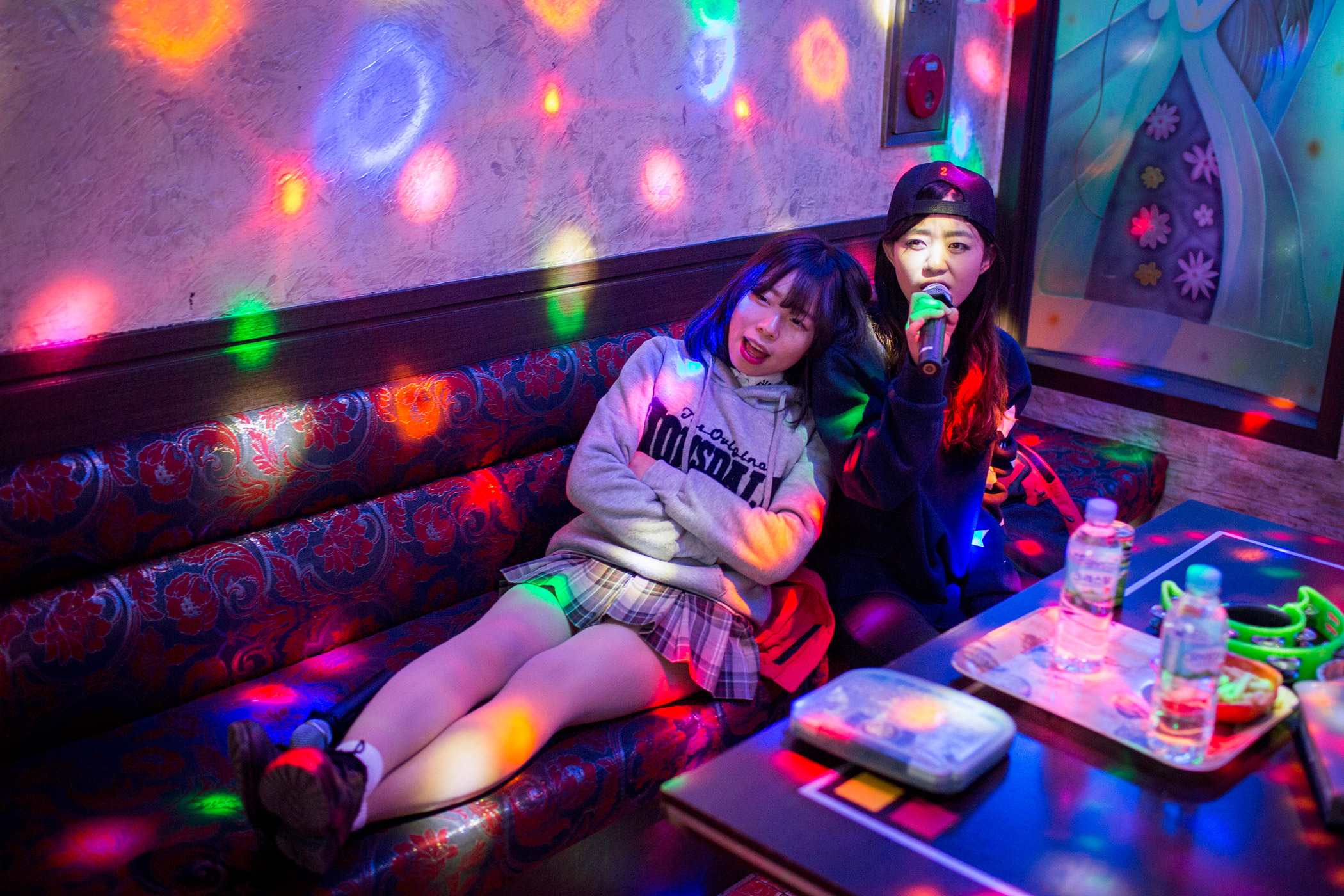

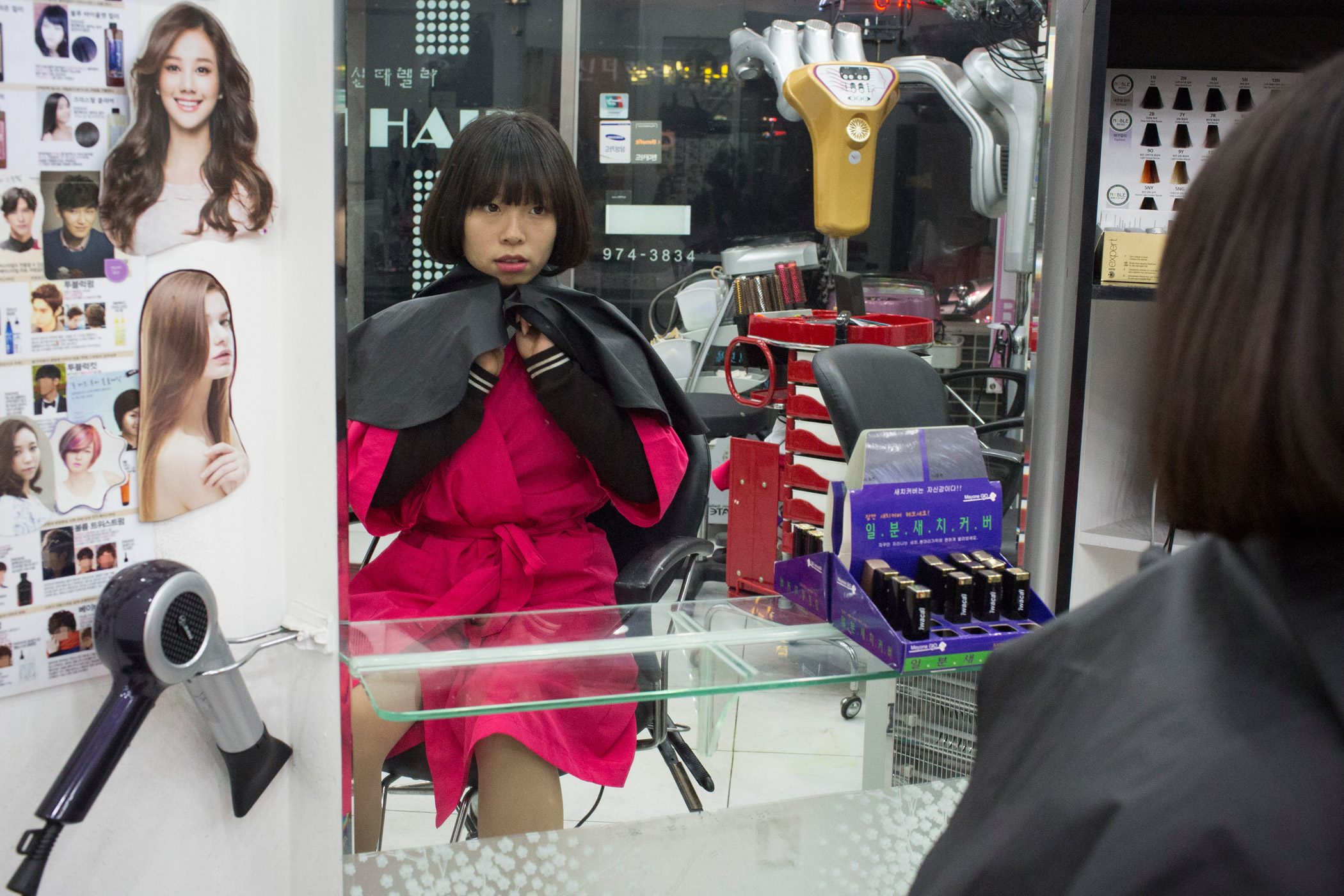
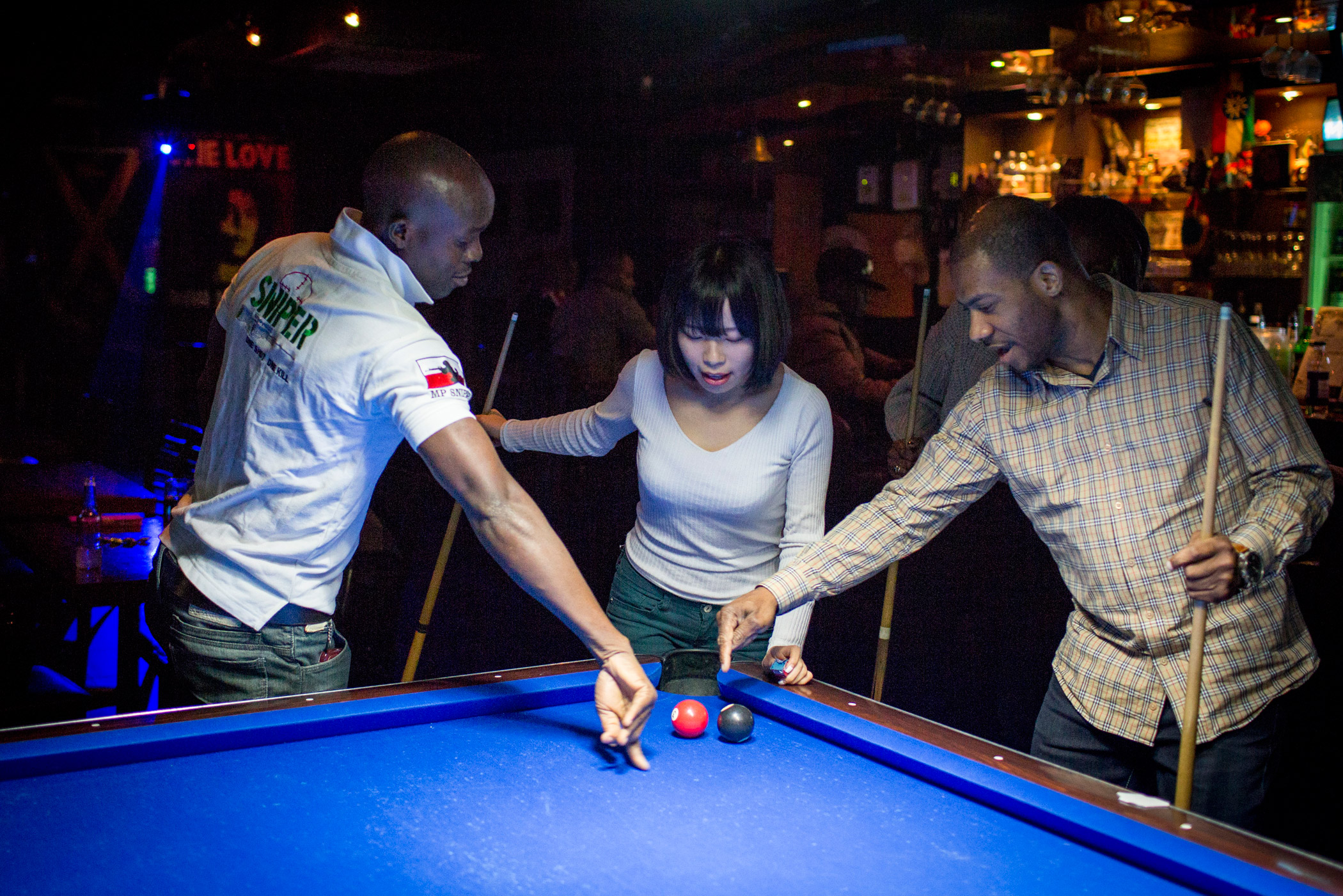
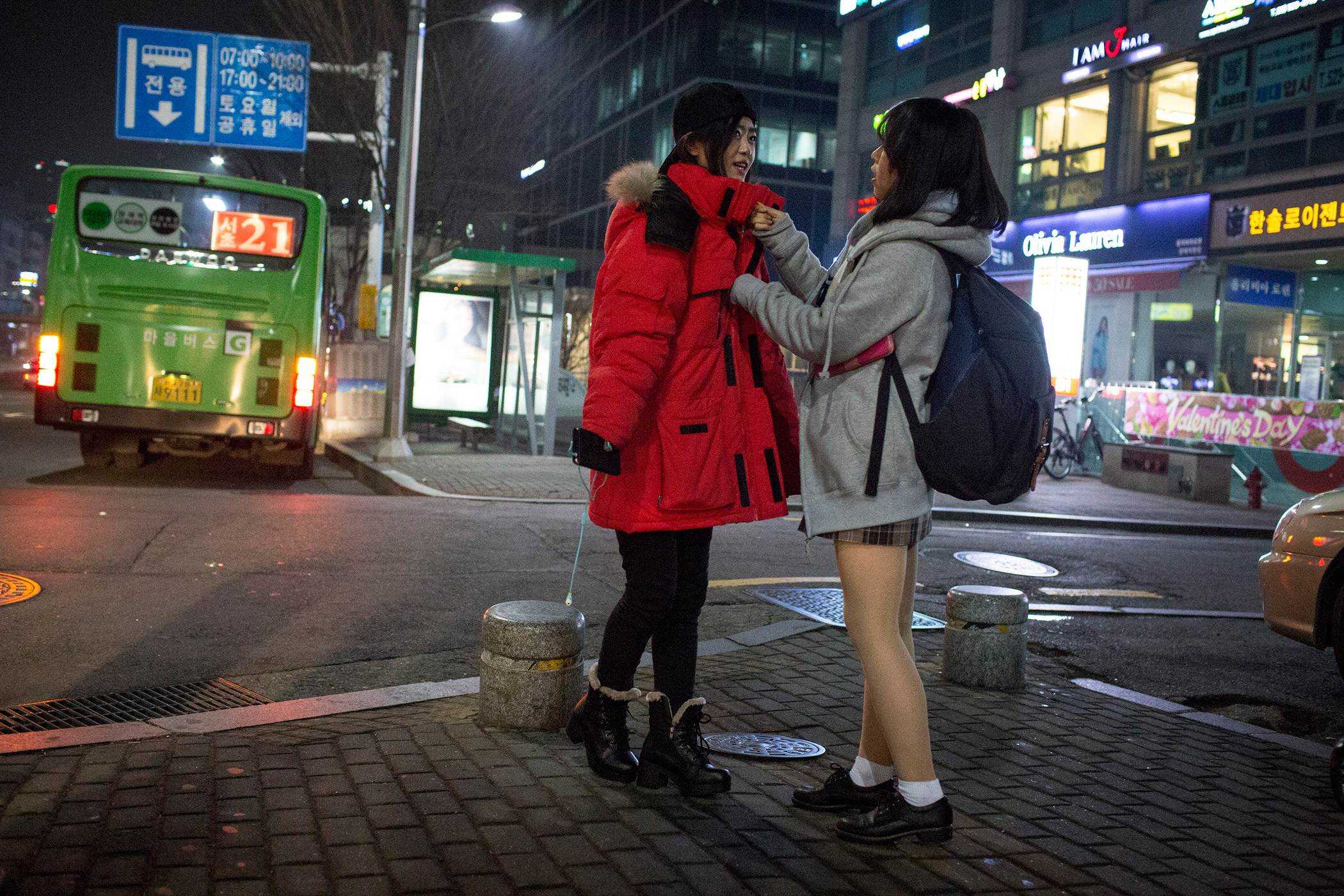
Because of the ramped-up sanctions, North Korea now relies heavily on dispatching workers abroad to earn foreign currency — most commonly to China, but also to Russia and the Middle East. There are around 50,000-60,000 laborers working abroad in factories, fields and restaurants. Their below-standard wages are collected directly by the authorities, with only a tiny fraction kept for the workers themselves. Different North Korean government departments also run around 130 restaurants in foreign cities such as Beijing, Rangoon, Dhaka, Vladivostok and Phnom Penh. Dandong has many such enterprises — the largest employing more than 200 North Korean staff; others just a handful.
Waitresses typically remain for three-year stints and hail from Pyongyang. Working abroad is deemed a mighty privilege in North Korea, and citizens permitted to live in the capital are considered the most loyal. Security is tight, nonetheless: girls reside together in dormitories under the watchful gaze of minders, who sit in the rear of restaurant during their shifts, conspicuous by their dour demeanors and gleaming Kim Il Sung pins.
Read More: North Korea Needs 3 Things to Hit the U.S. With a Nuclear Weapon
Occasionally, though, waitresses do join the tens of thousands of North Korean who choose to defect. In April, a dozen women from a restaurant in the Chinese city of Ningbo fled to Seoul, much to the ire of the North Korean authorities, who insist they have been kidnapped by South Korean agents.
Of course, the significant downside of visiting these restaurants — and all of Dandong’s tyranny tourism, by varying degree — is the ready cash funneled to the repressive regime of Supreme Leader Kim Jong Un. Even art is so tainted. Right on the riverbank, an outpost of North Korea’s prestigious, state-run Mansudae gallery hawks an eclectic array of pastoral landscapes and animals paintings. A portrait of a young woman relaxing against the backdrop of Pyongyang’s unfinished Ryugyong Hotel is listed at $25,000. A large portrait of a pig? $2,500. The scarcity of North Korean art evidently holds tremendous cachet.
And that cachet also apparently applies to karaoke workers — even inspiring counterfeit efforts. Passing by the same karaoke bar the following day, we bump into the boss and Golden Light. But this time Golden Light’s traditional garb has been replaced by a lacey top, jeans and swaths of dusky makeup — much more fitting attire for a Chinese karaoke-bar worker. The boss gives us a knowing grin. “Are you coming back tonight?”
— With reporting by Zhang Chi / Dandong
More Must-Reads From TIME
- The 100 Most Influential People of 2024
- Coco Gauff Is Playing for Herself Now
- Scenes From Pro-Palestinian Encampments Across U.S. Universities
- 6 Compliments That Land Every Time
- If You're Dating Right Now , You're Brave: Column
- The AI That Could Heal a Divided Internet
- Fallout Is a Brilliant Model for the Future of Video Game Adaptations
- Want Weekly Recs on What to Watch, Read, and More? Sign Up for Worth Your Time
Write to Charlie Campbell / Dandong at charlie.campbell@time.com